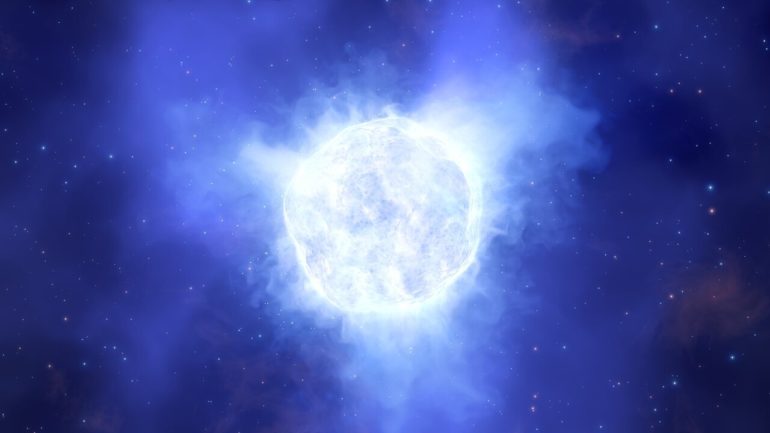Using the European Southern Observatory’s Very Large Telescope (VLT), astronomers have discovered the absence of an unstable massive star in a dwarf galaxy. Scientists think this could indicate that the star became less bright and partially obscured by dust. An alternative explanation is that the star collapsed into a black hole without producing a supernova. “If true,” says team leader and Ph.D. student Andrew Allan of Trinity College Dublin, Ireland, “this would be the first direct detection of such a monster star ending its life in this manner.”
Between 2001 and 2011, various teams of astronomers studied the mysterious massive star, located in the Kinman Dwarf galaxy, and their observations indicated it was in a late stage of its evolution. Allan and his collaborators in Ireland, Chile and the US wanted to find out more about how very massive stars end their lives, and the object in the Kinman Dwarf seemed like the perfect target. But when they pointed ESO’s VLT to the distant galaxy in 2019, they could no longer find the telltale signatures of the star. “Instead, we were surprised to find out that the star had disappeared!” says Allan, who led a study of the star published today in Monthly Notices of the Royal Astronomical Society.
Located some 75 million light-years away in the constellation of Aquarius, the Kinman Dwarf galaxy is too far away for astronomers to see its individual stars, but they can detect the signatures of some of them. From 2001 to 2011, the light from the galaxy consistently showed evidence that it hosted a ‘


